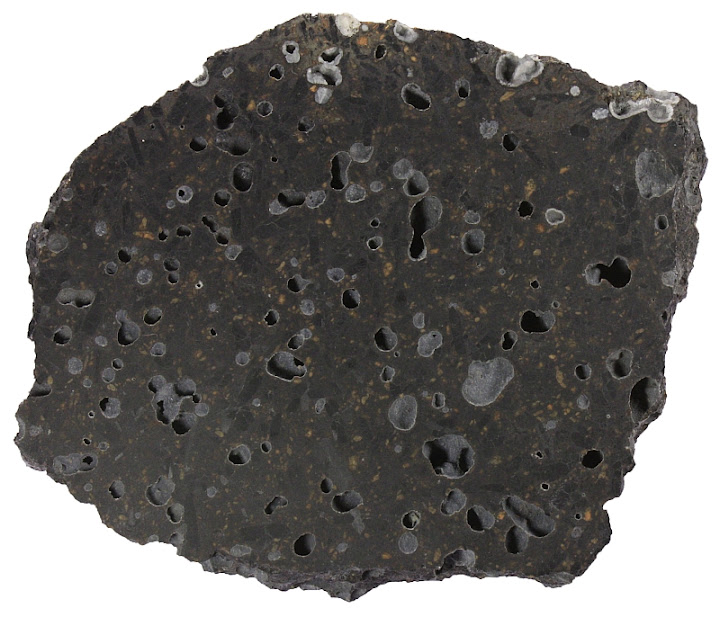Limburgite is a volcanic rock. This rock name is nowadays seldom used. It is one out of more than thousand rock names that were given to all kinds of igneous rocks during 19th and 20th century. Such a proliferation of names is understandable because at the time there were no uniformly accepted classification principles to use and everyone would be pleased to name a new rock type. But it definitely did not serve the best interests of geology. I am afraid no one fully understood what was going on at the time.

Limburgite from Kaiserstuhl (the volcanism took place in the Miocene). The width of the rock is 11 cm.
Then came a man named Albert Streckeisen who just didn’t propose yet another scheme for the classification of igneous rocks. Instead he analysed all the work that was done so far, consulted with many other geologists, and became the first head of Subcommission of the Systematics of Igneous Rocks (under IUGS Commission on Petrology) in 1970.
Under his guidance were created QAPF diagram for the classification of plutonic rocks and TAS diagram for volcanic rocks which are both now widely used and considered to be a standard in igneous petrology. ‘Limburgite’ and many others were just dropped.
How to call this rock type now? Volcanic rocks are classified according to their chemical composition. Limburgite is similar to basalt but it contains less silica and more alkali metals. In TAS diagram it would fall in the field of basanite.
‘Limburgite’ may be dropped as an official rock name but geologists often stubbornly keep traditions alive and continue to use historical names in areas where these names were used before. So do I. This rock what I am presenting here is limburgite as much as one rock can be. It is from Kaiserstuhl (low volcanic range in Germany) where it was first defined by a German petrographer Harry Rosenbusch in 1872.
Typical limburgite contains lots of vesicules that are partly filled with secondary minerals (amygdaloidal texture). Limburgite contains phenocrysts of augite (black slender prisms) and weathered olivine (yellow spots) in a glassy groundmass. What makes this rock type special is the lack of feldspars.
You describe the texture of this rock as miarolitic but I think you’ll find that amygdaloidal is a more accurate term for this texture. Amygdaloidal refers to a texture where secondary minerals partially or completely fill vesicles (http://en.wikipedia.org/wiki/Amygdaloid), whereas miarolitic also refers to minerals growing into void space, but generally primary minerals in a granitic pegmatite (http://en.wikipedia.org/wiki/Miarolitic).
Blogging is a great way to learn new things. So far I thought I knew that ‘amygdaloidal’ refers to vesicles completely filled with secondary minerals while ‘miarolitic’ means that only the walls of vesicles are covered with microdruses.